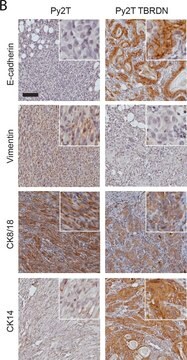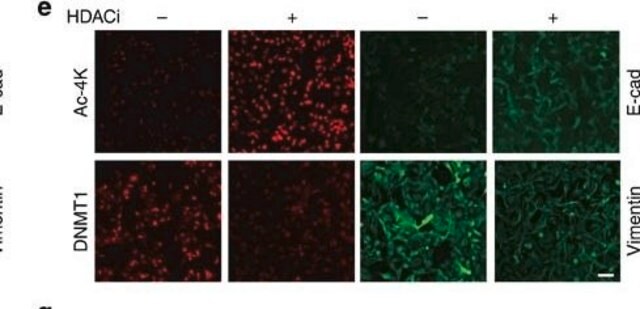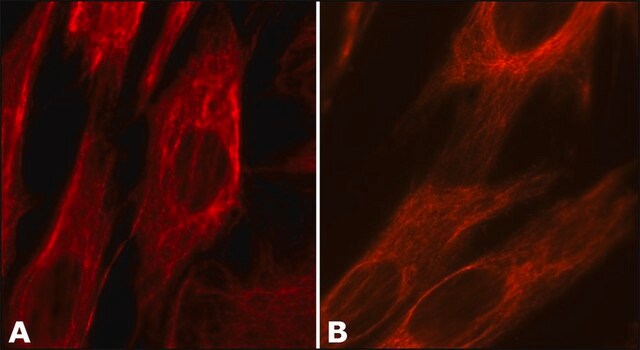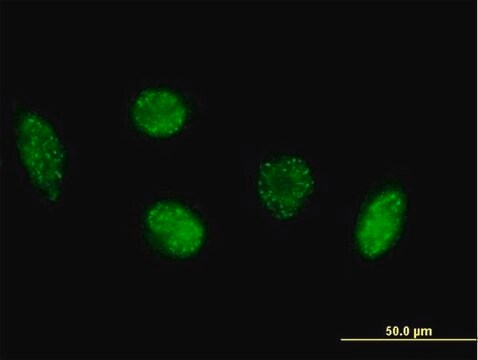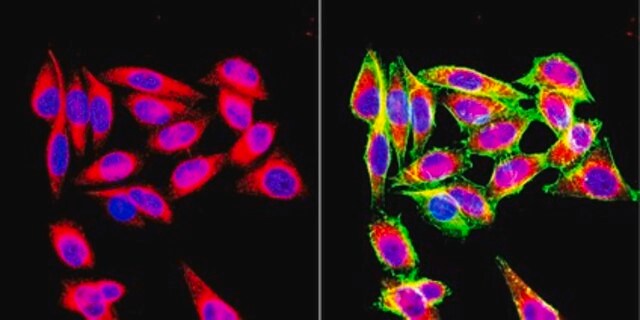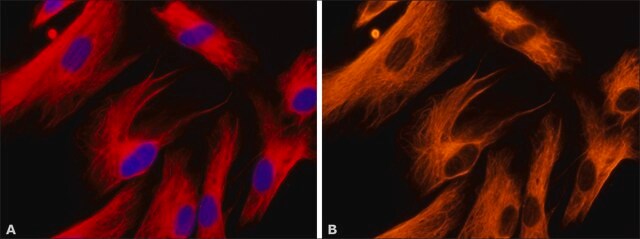V5255
Anti-Vimentin Antibody
mouse monoclonal, VIM-13.2
Synonym(s):
Anti-F5H288
About This Item
Recommended Products
Product Name
Monoclonal Anti-Vimentin antibody produced in mouse, clone VIM-13.2, ascites fluid
biological source
mouse
Quality Level
conjugate
unconjugated
antibody form
ascites fluid
antibody product type
primary antibodies
clone
VIM-13.2, monoclonal
species reactivity
chicken, rat, human, rabbit, frog, mouse
technique(s)
indirect immunofluorescence: 1:200 using cultured chicken fibroblasts
western blot: 1:500 using human fibroblasts cell extract
isotype
IgM
UniProt accession no.
shipped in
dry ice
storage temp.
−20°C
target post-translational modification
unmodified
Gene Information
human ... VIM(7431)
mouse ... Vim(22352)
rat ... Vim(81818)
General description
Immunogen
Application
- Immunocytochemical localization of vimentin in normal and pathological tissue of mesenchymal origin.
- It can also be used in immunoblotting
- Immunofluorescence
- Further, anti-vimentin antibody can be used to distinguish tumors and metastatic lesions derived from sarcomas, lymphomas, and melanomas.
Biochem/physiol Actions
Other Notes
SAB4200716 Anti-Vimentin antibody, Mouse monoclonal
clone VIM-13.2, purified from hybridoma cell culture
Disclaimer
Not finding the right product?
Try our Product Selector Tool.
related product
Storage Class Code
10 - Combustible liquids
WGK
WGK 3
Flash Point(F)
Not applicable
Flash Point(C)
Not applicable
Regulatory Listings
Regulatory Listings are mainly provided for chemical products. Only limited information can be provided here for non-chemical products. No entry means none of the components are listed. It is the user’s obligation to ensure the safe and legal use of the product.
JAN Code
V5255-100UL:
V5255-BULK:
V5255-.5ML:
V5255-.2ML:
V5255-VAR:
V5255-1VL:
Choose from one of the most recent versions:
Already Own This Product?
Find documentation for the products that you have recently purchased in the Document Library.
Customers Also Viewed
Our team of scientists has experience in all areas of research including Life Science, Material Science, Chemical Synthesis, Chromatography, Analytical and many others.
Contact Technical Service